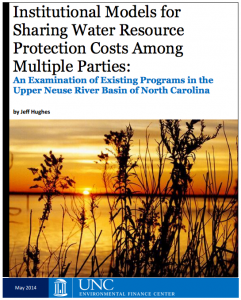 It happens almost every year: my family goes to the beach, and we invariably see an amazing house for sale that inspires us to dream. It takes only a few seconds to realize purchasing a beach house by ourselves is not an option, but what if we join forces with family, friends or neighbors? Suddenly the sticker price doesn’t seem so intimidating – we’ve solved the financial barrier to owning a beach house!! But as we start to think about the details, like how exactly we might join up with 6 other families, it doesn’t take long to come up with a long list of obstacles to joint ownership. What about all the legal issues related to joint ownership? What happens if after a few years, several of the families decide they are sick of the beach? What if one family ends up using the house a lot more than the other families – will they pay more? I’m sure figuring out all these issues is possible, but they seem so daunting it cures me for a least a year of considering buying a beach house.
It happens almost every year: my family goes to the beach, and we invariably see an amazing house for sale that inspires us to dream. It takes only a few seconds to realize purchasing a beach house by ourselves is not an option, but what if we join forces with family, friends or neighbors? Suddenly the sticker price doesn’t seem so intimidating – we’ve solved the financial barrier to owning a beach house!! But as we start to think about the details, like how exactly we might join up with 6 other families, it doesn’t take long to come up with a long list of obstacles to joint ownership. What about all the legal issues related to joint ownership? What happens if after a few years, several of the families decide they are sick of the beach? What if one family ends up using the house a lot more than the other families – will they pay more? I’m sure figuring out all these issues is possible, but they seem so daunting it cures me for a least a year of considering buying a beach house.
What does any of this have to do with environmental finance? Going through this yearly personal finance exercise reminds me of one of the critical truths of environmental finance – often paying for an environmental objective has more to do with governance than finding the money.
This is the same lesson we learn over and over again as the Environmental Finance Center works with communities on crafting cooperative watershed protection financing mechanisms. While we continue to focus on finding the money, more and more we are focusing on financial governance. Watershed finance almost always involves multiple local governments, multiple beneficiaries, and multiple financial contributors. Figuring out how to share resources successfully has stumped many communities, even when collectively there seems to be sufficient resources to tackle the challenge.
Institutional Models for Sharing Water Resource Protection Costs Among Multiple Parties
 In an effort to learn more about overcoming this challenge, the Environmental Finance Center recently completed an applied research project to study successful examples of organizations and local governments coming together to share financial resources. We did not have to look far from our offices in central North Carolina to find numerous examples of communities that created interesting mechanisms to share the costs of some type of water or watershed protection effort. While each of the models we investigated involved cost sharing, the method of implementing that cost sharing varied significantly in interesting ways. Crafting collaborative governance structures, particularly those involving financial outlays, is as much of an art as a science.
In an effort to learn more about overcoming this challenge, the Environmental Finance Center recently completed an applied research project to study successful examples of organizations and local governments coming together to share financial resources. We did not have to look far from our offices in central North Carolina to find numerous examples of communities that created interesting mechanisms to share the costs of some type of water or watershed protection effort. While each of the models we investigated involved cost sharing, the method of implementing that cost sharing varied significantly in interesting ways. Crafting collaborative governance structures, particularly those involving financial outlays, is as much of an art as a science.
The more successful models shared some similarities. For example, most of the robust programs studied involved multi-component funding contribution mechanisms. In other words, the part of the financial pie a community was responsible for was not calculated based on a single factor (i.e everyone pays the same, everyone pays based on area in watershed, everyone pays based on population). In practice, funding contributions were controlled by a formula based on two or three of these models.
Other commonalities of successful models include:
- Participation of a highly credible and mutually respected champion and/or leader organization to oversee shared finances.
- Linkages between the funding model and basic objectives
- Matching scale to the model – some watershed protection efforts involve hundreds of dollars, while others involve millions of dollars.
To learn more about model design, read the entire paper.
Related Posts:
- Water Funds: Financing FONAG in Ecuador
- Watershed Finance: Promoting Watershed Protection Finance Strategies through Effective and Transparent Communication Tools
- Tools for Multi-Jurisdictional Approaches to Water Quality
Jeff Hughes is the Director of the Environmental Finance Center at UNC Chapel Hill.





Although I have used this website for several beneficial reasons, I must make this statement.
So much of our small water system expenses are tre result of EPA regulations. In our retirement community the cost of water is doubled, and my well have to triple, from $32.00, to 60.00 and possibly to 90.00 per month to support a reverse osmosis system deemed necessary by New Mexico Environdept, engineers, and uninformed board
Permits, applications, numerous sampling, cost of taking samples to lab, over 90 miles, one way, are examples of EPA induced costs.
On income of average approximately 1000.00 or less per month, this is a real negative on our quality of life.
The old system, chlorinated waster, worked well. The standards for sampling changed, the water did not.